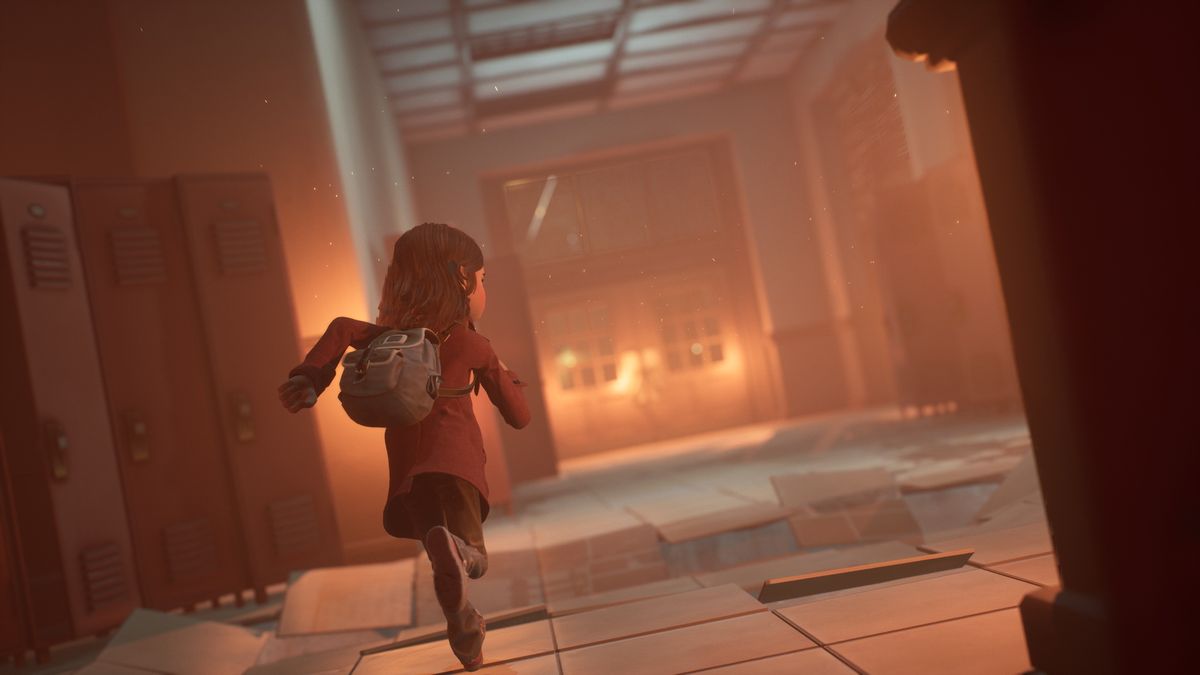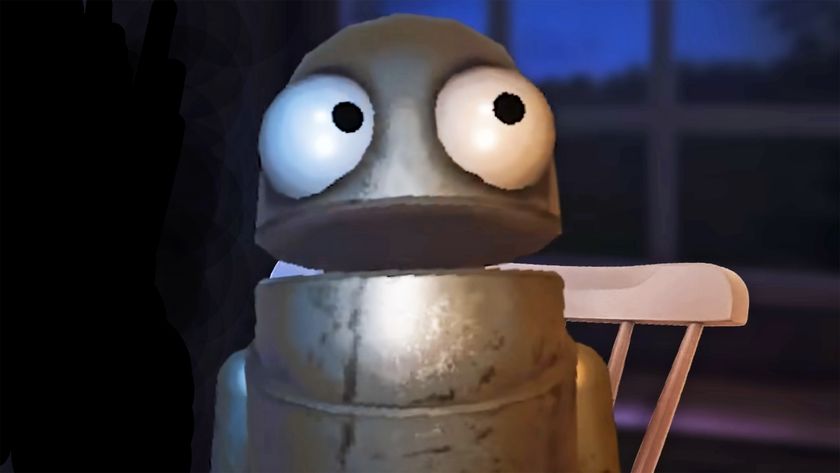12DOVE Verdict
Gylt presents some bright ideas in its dark world even as its gameplay mechanics are often much too familiar.
Pros
- +
Works great as gateway horror for young genre fans
- +
Color palette and lighting make the world pop
- +
A spooky but not severe soundtrack fitting of the tone
Cons
- -
Story feels like it’s missing pieces
- -
Gameplay is light on new ideas
Why you can trust 12DOVE
As the lone platform exclusive in Google Stadia’s launch day lineup, Gylt probably has more pressure bearing down on it than its relatively small studio deserves. Though, with an eclectic backlog of work spanning many genres and modes of play, few would seem more enthused to be there on day one than the Madrid-based Tequila Works. Despite the intricacies involved for Google Stadia early adopters, Gylt holds its own not so much as a genre-smashing pioneer – it’s anything but that, nor is it some technical powerhouse even with the Google cloud powering it – but rather, it lives on past its credits thanks to its special status as a gateway horror story particularly suited for younger genre fans.

Release date: November 19, 2019
Platform(s): Google Stadia
Baby’s first Silent Hill
Gylt is a horror game, but that’s not to say it’s likely to be a scary game. As the middle school-aged Sally, players find themselves in her home of Bethelwood, a once quaint mining town now playing host to brutish monsters of various shapes and sizes. Her younger cousin Emily has been missing for a month, and the search for her drives Sally to dig deeper into the history of the town as well as her relationship with Emily. For six or seven gameplay hours, Sally will be one step behind her troubled cousin, desperate for answers.
The central mystery is a fun one and captures the Laika-like spirit of the project perfectly. Gylt is thematically dark, but never pushes the envelope too far. Its T rating by the ESRB comes mostly by way of some foul language scribbled on the walls of the town, but the horrors themselves feel more like Pixar After Dark than true survival-horror fare, and that’s totally fine, because it’s clearly the vision Tequila Works had for Gylt and it delivers on it with precision.

Gylt is a modern gateway horror, for the young or inexperienced fans dipping their toes in the murky waters of genre stories. We all must walk before we run, and that’s truer of horror than of any other genre. For the young adults and kids who can’t yet handle the Silent Hills and Resident Evils of the world, Gylt is the perfect introduction to what’s creeping around the corner. It’s not terrifying, it’s spooky. And though it can be tense at times, it’s never traumatizing. Gylt’s greatest feat is attributed to its world builders whose self-imposed limitations usher in a tone that hardly exists anywhere else in games right now.
That’s not to say Gylt gets its story beats all right. On the contrary, it has a habit of under-explaining things, both throughout the game and, more importantly, when the end credits roll. I always love a lingering mystery. I tend to prefer it over answers, in fact, but Gylt repeatedly prevents me from even asking the questions. Several of its dangling threads are left so unresolved that I can’t even guess at what was being implied. Lots more story takes place in the collectibles, which is fine and not at all uncommon, but those I found still didn’t account for some of my biggest questions, and Gylt seems totally disinterested in giving me the tools to do more digging.
Déjà joué

Gylt’s tone and world go a long way to make up for the game’s totally familiar gameplay experience. From its puzzles made alternatingly of wires and valves that need spinning to enemies whose patrols encompass only the same 20 feet of space on a loop, Gylt is at best a charmingly typical experience, like the kind of stealth-action puzzle-platformer mash-up movie tie-in we hardly see anymore. At worst, it’s totally void of new ideas when it comes to how players actually interact with it.
Sally spends most of her time crouched behind crates waiting for a nearby monster to look the other way for precisely the six seconds she needs to advance to the next shadow. Likening the game even more to an introductory-level horror, the roundabout traversal feels plucked right out of the genre greats – find a key to open a door which grants you an item to backtrack to a previous door inside of which you’ll find a chest with another item which allows you to move on to a combat area after which you find a bird-shaped crest that you can plug into a door you saw an hour ago. You know the drill.

Enemies are both easy to fool and sometimes annoyingly good at spotting you in the dark. I never did nail down the distance I needed to keep when they were facing my way. In Gylt, shadows do not mean invisibility as they tend to in other games. It just closes the distance monsters need before they spot you. Regardless, with detection meters and scripted movements assisting, stealth feels not just familiar and easy, but dated.
Combat is better and emphasizes fighting with your two improvised tools: a flashlight, which lets you to burn away some monsters like you’re Alan Wake’s daughter, and a fire extinguisher, which allows you to freeze the more stubborn villains in place. Both will frequently be used for puzzle-solving too, but in most interactions of any sort, Gylt will feel like something you’ve already played countless times before.
Like a Laika

Gylt’s best feature after its tone is its visual style, whose funhouse mirror proportionality is instantly reminiscent of most computer-generated movies from the past 25 years. Textures blur the line between photo-realism and cartoon while colors pop when they’re meant to, though it’s also a frequently dark game. Tequila Works shows off in Gylt’s setting, with a neon-lit arcade and an eerie gymnasium standing out as two especially memorable areas that look fantastic and pack just the right amount of creepiness to complement the tone. If you like stuff like Coraline or ParaNorman, you’ll find GYLT is familiar visually as it is in its gameplay, but in this instance it feels more commendable.
The soundtrack is the pitch-perfect accompaniment to Gylt’s adolescent horror tale, and it was the first indication that I was not to expect an adult tone. It carries the playful ghoulishness of Beetlejuice, never to be confused for something sinister, but mysterious and enchanting. Its small cast of voice actors does a good job too, with real children seemingly in the starring roles and who, regardless, actually talk like children.
Collectively, Gylt feels like yet another intriguing one-off game from Tequila Works, who now has developed five games in 10 years without any sequels, while no two of their games even exist in the same genre. That’s extremely rare and praiseworthy, even if Gylt isn’t their best game. Its unique world-building and stylish audio and visuals keep afloat a tired gameplay suite, making it a worthwhile time for genre fans, especially those embarking on their first horror story.
Reviewed on Google Stadia.
Mark Delaney is a prolific copywriter and journalist. Having contributed to publications like 12DOVE and Official Xbox Magazine, writing news, features, reviews, and guides, he has since turned his eye to other adventures in the industry. In 2019, Mark became OpenCritic's first in-house staff writer, and in 2021 he became the guides editor over at GameSpot.














